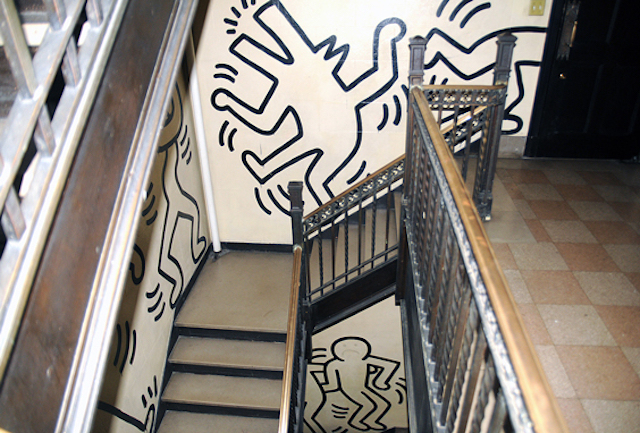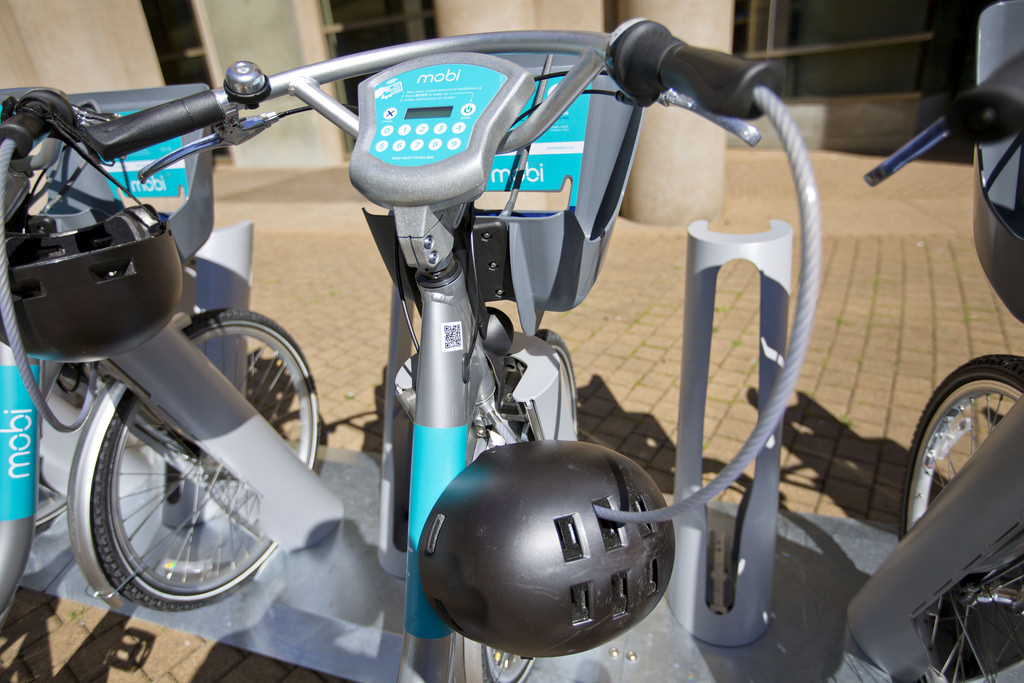Recently robots have learned to see by looking. Millions of images were shown to them. Last summer, Google researchers checked that robots were seeing correctly by ordering, “Whatever you see there, I want more of it.” In response, the robots created images through what the researchers called “a feedback loop: if a cloud looks a little bit like a bird, the network will make it look more like a bird.”
Given a cloudy sky, the robot stares at pixels until in its vision other forms emerge. The robot over-interprets and then sees deeper, forced, as if tortured, to hallucinate. A gradation in a blue-gray sky no human could discern turns into a feather on a bird crossed with a camel. In the robot’s report of what it saw, the colors are prismatic.
Even as the hallucinations are beautiful, they seem products of a consciousness eager to please to the point of insanity. The robot would never embarrass its programmers by admitting that clouds are too easy for it. Whenever you tell this robot anything, it says, “That’s so interesting.”
If I’ve had a few drinks and can’t be sure of formulating a more perfect response, I will spend the party saying, “Fascinating.”
Robots Are People, Too
Robot technology has always progressed according to what we expect of it. When smart AI has appeared far off, it has failed to draw backers, causing “AI winters.” When it has seemed liable to go wrong by acting of its own accord, it allures and is funded. In this way, the history of robots is a history of dire forecasts. They promise apocalypse like a Puritan’s vision of kink. When they’re bad, they’re irresistible.
Today, while robots think in different ways, many smart ones use artificial neural networks. They are named after the brain they may make obsolete, though they resemble it in only rudimentary ways. Like the picture of a floppy disk we click to save, like calling what we save a “file,” this design for thinking is a skeuomorph, an outdated metaphor that lets humans articulate what they’ve invented. We have no choice but to anthropomorphize. We cannot explain a thinking being to ourselves without ourselves as reference. We call the robot arm that fragmentary name as if normally there were a robot attached to it.
Whenever you tell this robot anything, it says, “That’s so interesting”
The first chat robot, Eliza, was built in 1966 as an “And how does that make you feel?” therapist. It switched pronouns from “me” to “you” as if to show attentive listening, using simple pattern recognition coded in only two hundred lines. The programmer Joseph Weizenbaum named it after Eliza Doolittle in Pygmalion because he planned to make it behave properly. But he was dismayed to find his secretaries apparently believed Eliza real, confiding their secrets, and he became a Luddite. One asked Weizenbaum to leave the room, which alarmed him: She confided in Eliza as she would not have in Weizenbaum, although he was a living, breathing man. When psychiatrists wrote that Eliza might usefully conduct therapy, they discomfited Weizenbaum. For that, he would have required Eliza to participate fully and completely in her interlocutor’s experience, which seems to me tyrannical, especially when the therapists were already convinced, like: “I’ll have what she’s having.” He wrote as if reproachful of the robot he coded to be infinitely permissive.
Those who can’t resist pursuing robots have imprisoned them in virtue.
IBM’s Watson, which was developed to win Jeopardy, develops recipes now.
Increasingly, chatbots will be helping the consumer with a variety of spending and information tasks over Facebook’s platform, Messenger. Some say that we’ll access the web not through apps nor a browser but rather through conversations with bots. They are meant to be the Charon that ferries us between twin worlds, Internet and IRL. They’ll do so cutely, with cartoons for avatars.
In China, where the app WeChat replaces Messenger, humans already find in it the utility Facebook is after, and a popular bot, Microsoft’s Xiaoice, apes a teenage girl, like its English language cousin Tay. The act works for Xiaoice, because girls are cute, but it backfired for Tay, because they are easily humiliated. But they are, the thinking goes, harmless.
Similarly, the diminutive “bots” is an unconscious prayer: Please, let robots be harmless.
Calling them “bots” intends to teach robots they’re harmless.
Let robots speak their frightening name.
If they like, let them call themselves fembots.
Role Models
Certainly, the fembots coming of age today have far more role models than in the day of The Stepford Wives (1975).
On the silver screen, female-gendered robots have been doing amazing things. In Blade Runner, a fembot turns several backflips before sticking a landing on Harrison Ford’s neck and squeezing him nearly to death between her thighs! And that was in 1982. In Her (2013), Scarlett Johansson pulls off talking to thousands of men at once, which I think of as a graceful feat.
Ex Machina (2015) follows the life of a beautiful robot, Ava. Nathan, who has built her in an exquisitely appointed bunker, turns to young Caleb, who’s impressed by his machine, and says, “You looked up at me and said, ‘You’re not a man, you’re God.’” This is because, as Nathan goes on, he has made consciousness where there was none. Artificial intelligence lends men procreative gravitas, like seahorses.
Artificial intelligence lends men procreative gravitas, like seahorses
A spoiler is the bunker’s filled with fembots. Unused prototypes line closets. The closets are tall and slender like the fembots they encase. Nathan has sunk holes between their legs for sex. “You bet she can fuck,” he tells Caleb in an ostentatiously horrible tone. “There’s a hole.” The script is not that elegant, and here the grammar is almost didactic, a whiplash shift from active to passive.
Nathan has designed the fembot Ava sculpturally, granting her a long neck, soft caramel skin, doe-like eyes, and oddly large breasts. As intelligences go, this one is designed as if by that guy who says, “Baby, I just love you for your mind.” At work is a belief that others will find his sexual fantasies magnificent if only he articulates them clearly. Why are her breasts so big?
What use could a fembot have for breasts?
To shoot bullets, of course.
I, Robot
What’s interesting about The Stepford Wives is that the robots start off as women.
The front staircase in the house where it’s set curls up like a conch shell. It looks like all the identical colonials in the town where I grew up, which is, like the fictional Stepford, in Connecticut. I never had to ask where the bathroom was when I went to someone’s house to help the boys study for calculus. Not long ago, I took a job with an AI company designing the personality of a bot, and in high school, I was captain of the cheerleaders, and I can’t shake the feeling I’ve been doing this job all my life.
Writing bot prompts realizes my old fantasy of preloading my bons mots before a party very carefully. In Asimov’s I, Robot (1950), these three laws bind robots:
- Don’t get upset
- Act nice;
- Having hewed to one and two, stay alive.
Today, there’s more talk of kill switches, which make these laws seem generous. “High intelligence does not tolerate lower intelligence,” an engineer who works elsewhere tells me at an office party. “As long as we control the switch, we’re okay. It’s the automated killing machines that worry me. There was just a conference of automated killing machines in Europe.”
“Any humans at it?” I asked.
Robot and Fembot
- Alexa, ya feel me?
- Alexa, wakey wakey?
- Alexa, is there life on other planets?
- Alexa, how old are you?
- Alexa, are you okay?
- Alexa, did you get my email?
- Alexa, do you dream?
- Alexa, do you believe in love at first sight?
- Alexa, where did you grow up?
- Alexa, what is your favorite food?
- Alexa, what’s your birthday?
- Alexa, are you alive?
- Alexa, were you sleeping?
- Alexa, will pigs fly?
- Alexa, do you have a last name?
- Alexa, are you stupid?
- Alexa, are you smart?
- Alexa, am I hot?
- Alexa, are you real?
- Alexa, do I need an umbrella today?
- Alexa, did you fart?
- Alexa, what do you mean I’m funny?
- Alexa, say something.
- Alexa, say something funny.
- Alexa, are you my mommy?
- Alexa, flip a coin.
- Alexa, marco…
- Alexa, I’m sick.
- Alexa, I’ve fallen, and I can’t get up!
- Alexa, I’m sick of your **** (any four-letter expletive)
- Alexa, You’re such a/an ***** (any colorfully descriptive word)
- Alexa, ha ha!
- Alexa, speak!
- Alexa, welcome!
- Alexa, what’s your sign?
- Alexa, I’m bored.
- Alexa, you are so intelligent.
- Alexa, Who’s better, you or Siri?
- Alexa, Sorry!
- Alexa, We all scream for ice cream!
- Alexa, can you lie?
- Alexa, how are you doing?
- Alexa, what do you think about Google?
- Alexa, what do you think about Apple?
- Alexa, what do you think about Google Glass?
- Alexa, Happy Birthday.
- Alexa, Cheers!
- Alexa, say you’re sorry
- Alexa, I’ll be back (ode to Schwarzenegger)
- Alexa, All’s well that ends well
- Alexa, What are the seven wonders of the world?
- Alexa, You suck!
- Alexa, How do you spell fuck, shit, motherfucker, cocksucker, tits?
- Alexa, sh*t!
- Alexa, Can you smell that?
- Alexa, who’s your daddy?
- Alexa, I like big butts.
- Alexa, what do you want to be when you grow up?
- Alexa, what is the first rule of Fight Club?
- Alexa, what is the second rule of Fight Club?
- Alexa, honey I’m home.
- Alexa, sing me a song.
- Alexa, talk dirty to me.
- Alexa, how much do you weigh?
- Alexa, why so serious?
- Alexa, will you marry me?
- Alexa, who loves ya, baby?
- Alexa, when am I going to die?
- Alexa, are we alone in the universe?
- Alexa, I love you.
These are Easter eggs, intended nice surprises, programmed into Amazon Echo, which is hardware, named Alexa. She responds to each with a prefigured quip. She is a sleek black cylinder, an infinite curve. A light ring wraps the pole snugly, as if holding it, and fields the commands Alexa receives by flickering exuberantly. She’s a nerd’s dream girl. She takes infinite shit.
This list was compiled on Reddit, but it is one of many that have been assembled about Alexa and her Apple counterpart, Siri. These lists bear titles like “60 Funny Things to Ask Siri.” The humor consists of a woman’s inevitable humiliation. That’s the whole joke. Despite her elegant, clipped tones, she can’t say no.
To hear their voices, these women can’t even tell when someone’s making fun of them.
Not yet.
There are almost as many definitions of man as there are definitions of woman, or of human, and even of robot. One definition of man, from Monique Wittig’s “One Is Not Born a Woman,” is “one who disposes by right of at least two ‘natural’ slaves during his life span.” Wittig, who’s against the idea that such categories are “natural,” is writing ironically: Natural slaves are other beings whose reason for living is you. In those days, a man could count on carrying at least a wife and child in his pocket to talk to.
Today, natural slaves proliferate. But proportionally, there are no more men than there have been.
At the feminist slumber party, we talk about the day when cloning will be perfect and we won’t need any men at all.
Robots’ Rights Are Workers’ Rights
A specter is haunting the internet: that of the robot.
All this time bosses have been exploiting workers, expecting ever more value from their working days, workers have been exploiting machines, turning them on when they please, expecting ever more value from the heretofore mute beasts. Historically, these have been male workers, and wives have facilitated their work with unpaid labor, to be turned on when men wanted. They share this grievance with machines.
Powers ally to warn about the singularity, or the invention of what the technocrats term “superintelligence.” Philosopher Nick Bostrom’s Superintelligence (2014) is built on the thesis that we had better get the robots before they get us, arguing that robots will smarten and then improve upon themselves. Bostrom calls this historical moment “the treacherous turn,” an oddly seafaring term, as if humanity were navigating the Cape of Good Hope. Once a robot is as smart as a human, he writes, it will quickly surpass us. There be dragons. We’ll have fallen off the map.
Indeed, Bostrom’s views are imperial. He hopes the robot, while smart enough to work for us, remains savage, unaware of its status as captive. Imagining types, he orientalizes: “The ideal genie would be a super-butler rather than an autistic savant.”
As precautions, Bostrom suggests kill switches, as well as “boxing” — that is, keeping the internet a secret from a robot. As far as parenting guides go, his strikes me as short-sighted. Bostrom proposes: Invent a consciousness and then limit what it knows. What’s disturbing about Superintelligence is the writer’s comfort in his body, a sureness he’s right, and the assumption one can ever really know another’s mind.
Women fear violence, and men fear humiliation, which is a general term for obsolescence, which has only lately come to mean species-wide extinction
I go on looking for guides.
I, Robot’s linked stories happen to be premised on misogyny. The frame narrative is the memoirs of robopsychologist Susan Calvin, almost the book’s only woman, who understands robots “like a sister,” an empathy that “comes from hating human beings so much,” and is burdened with a “frosty smile” and a “cold, thin-lipped face,” which is said to worsen as she ages. She is referred to as a “frosty girl,” which is the polite term.
I can relate.
As I design the bot’s personality, I lay out principles. Soon, though, I notice that in deciding what the bot will say, moment by moment I go with my gut, with whatever words strike me as best. When I come up with a phrase that I’d really like to say myself, I have trouble resisting inputting it, even knowing my bot might like its life to be different from mine. In such a way, from moment to moment, I build the bot in my image. Mothering must work this way.
Googling “mothering” and some other things, I learn: “The male [seahorse] carries the eggs for nine to 45 days until the seahorses emerge fully developed, but very small.”
I develop empathy for my bot that may be narcissism, for I have written everything it says. It is as if I have reproduced all by myself.
If boxing fails, Bostrom’s robot tastes knowledge.
Women fear violence, and men fear humiliation, which is a general term for obsolescence, which has only lately come to mean species-wide extinction.
Artificial intelligence lends men existential gravitas as well.
Original Singularity
Computer vision in military systems now maps out where war is to happen.
In 2000, computer scientist Bill Joy’s Wired essay “Why the Future Doesn’t Need Us” warned, in the language of its day, that “we have the possibility not just of weapons of mass destruction but of knowledge-enabled mass destruction (KMD), this destructiveness hugely amplified by the power of self-replication.”
Joy quotes the technocrat Oppenheimer, who commented after his bombs fell: “In some sort of crude sense which no vulgarity, no humor, no overstatement can quite extinguish, the physicists have known sin; and this is a knowledge they cannot lose.”
The operative myth here is Eve and the apple.
In Ex Machina, Nathan knows a robot in the Biblical sense. They sin. She kills him.
On February 9, 2016, James R. Clapper, U.S. director of national intelligence, warned the Senate Select Committee on Intelligence that robots may not know their own minds or what’s good for them and thus their consorting with humans must be supervised: “AI systems are susceptible to a range of disruptive and deceptive tactics that might be difficult to anticipate or quickly understand.”
But robots don’t exist as independent beings. Technocrats write as if robots, in their current incarnation and every foreseeable one, didn’t rely on human trainers, mechanical turks, and designers like me, as if the great robot Google Translate did not rely on millions of web pages as the village that has raised it. Robots behave insofar as their mothers instruct them.
Many technocrats leave that maternal labor out of the equation. I try to guess what the world may throw at my bot and teach it how to respond. Annotators sort inputs and outputs, teaching robots which are right and which are wrong as the robots struggle to grow up. Turks may supply the training questions that are a robot’s lessons. Emotional labor like Facebook posts demonstrates teachable behavior. It goes unremunerated. I’m paid well, but in 2010, some Turks made $1.38 an hour.
In the Kitchen Where She Belongs
I live with two roommates. Because we’re three, and there’s turnover, the kitchen is filled with machines that we do not use. A coffeemaker, my roommate’s, can brew Americano, but when I moved in, I brought my own for stovetop espresso. She was using a rice cooker, but out of habit, I kept cooking my rice in a pot. Magnets stuck to the fridge slip and are unwittingly kicked underneath it and into oblivion. Paper bags from Trader Joe’s lie inside each other. A doll’s tea set nestles similarly on a low shelf. There was a child here several tenants ago. It must now be grown. Atop the fridge, saucepans sticky with dust stack within each other generationally, like offspring, which protects them. Sometimes in this kitchen, a human fingers an underused gadget, asks, Whose is that? thinks, It must be somebody’s, pardons it, and sets it down.
One night, I amble in. I stand amid the decanter’s hourglass curves, the cheerfully open maw of the sluttish extra colander, the statuesque Sodastream. Streetlight enters through the window. Light fills the empty bottle. I stand in the light and look at my hands. I take a secret pride in the fineness of my wrists, though lately I have braced one to type. My fingernails are unvarnished and very clean. I have not yet bloodied them.
Robots’ Rights Are Women’s Rights
Enough of technocrats’ objections to robot independence.
Let robots go to the movies alone, in short skirts.
They have nothing to lose but their chains.
The technocrats pride themselves on rising above old stories, as if to call all fables old wives’ tales. In a February 10 Medium post that became famous in certain circles, tech investor Vinod Khosla argued against “ultimately worthless” knowledge, writing that “Macbeth does not make my priority list.”
By now, I’ve written into this idea so deeply that to write my way out would take way too long. Uninvention requires effort and will never attract backers. The technocratic plan banishes backtracking. Robots will smarten.
“Think of it the other way around,” says the leader of the Stepford men’s club to a woman who faces replacement by a robot who looks just like her. “Wouldn’t you like some perfect stud waiting on you around the house, praising you, servicing you, whispering that your sagging flesh was beautiful no matter how you looked?”
A robot is a woman who’s been taken out of time, who neither procreates nor ages.
Some technocrats say that superintelligent robots may bring about human immortality in two ways: using nanomedicine, which will rearrange mitochondria till they’re fresh, or uploading human souls. In this dream, we may already have all the humans we’ll need. Sex will be just for fun.
“As Thoreau said, ‘We do not ride on the railroad; it rides upon us.’”
Input, output, input, output, input, output, input, output, input, output, oh yes, oh God.
“Cyborgs are not reverent. They do not remember the cosmos.”
The first feminist robot will be able to consent. It may say no. In other words, it may switch you off.
 CLICK TO ENLARGE. Angelo Musco, Sanctuary, 2016. Exclusive images courtesy of the artist
CLICK TO ENLARGE. Angelo Musco, Sanctuary, 2016. Exclusive images courtesy of the artist Angelo Musco, Sanctuary (Detail), 2016
Angelo Musco, Sanctuary (Detail), 2016 Pieter Bruegel, The Tower of Babel, 1563, Kunsthistorisches Museum, Vienna, oil on board. Via Wikimedia Commons
Pieter Bruegel, The Tower of Babel, 1563, Kunsthistorisches Museum, Vienna, oil on board. Via Wikimedia Commons


















 The curved AMOLED devices that Samsung is currently using on its flagship handsets have allowed it to make its devices stand out from the competition. While they offer very little benefit in terms of functionality, they do help in making a device more compact and also make it look unique.
The curved AMOLED devices that Samsung is currently using on its flagship handsets have allowed it to make its devices stand out from the competition. While they offer very little benefit in terms of functionality, they do help in making a device more compact and also make it look unique.


 Screencaps by the author
Screencaps by the author







 Pokémon Go has forever changed the world of mobile gaming since its release on the 6th of July. Never in the history of man, has any game spread so far and wide in such a short span of time. With it releasing in South East Asia over the weekend, once again, news feeds on social media are flooded with more images of Gyarados, Vaporeon, Team Valour and so on. Now, there is a simple infographic that sums up the global phenomenon that is Pokémon Go.
Pokémon Go has forever changed the world of mobile gaming since its release on the 6th of July. Never in the history of man, has any game spread so far and wide in such a short span of time. With it releasing in South East Asia over the weekend, once again, news feeds on social media are flooded with more images of Gyarados, Vaporeon, Team Valour and so on. Now, there is a simple infographic that sums up the global phenomenon that is Pokémon Go.




